Enhancing safety and productivity at Changi Airport’s runway
New initiatives and equipment reduce runway maintenance time
New initiatives and equipment reduce runway maintenance time






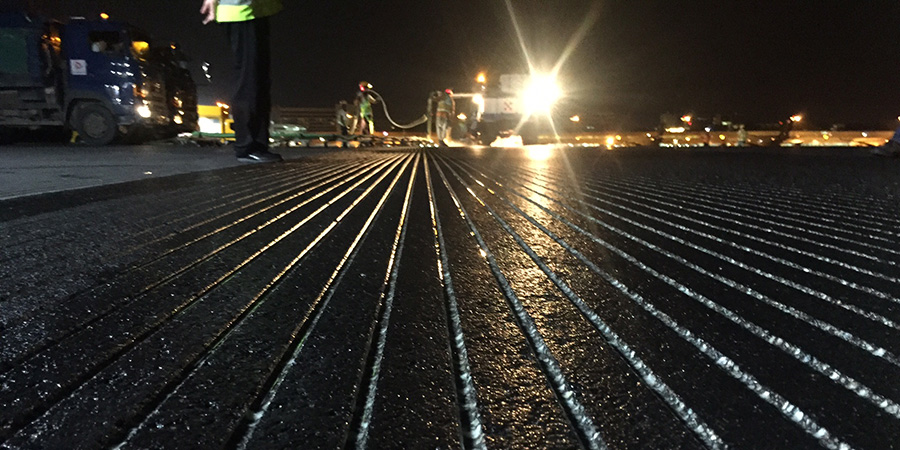


A new runway maintenance process is now in place, giving a big boost to Changi Airport’s ongoing productivity and safety drive. The enhanced approach includes a new way to cut the grooves across the runway, the use of a stronger asphalt mix for resurfacing, and the introduction of the latest runway maintenance machines – all of which have helped to increase operational efficiency.
Here’s Changi Journeys’ lowdown on the latest enhancements in the airfield you might have missed.
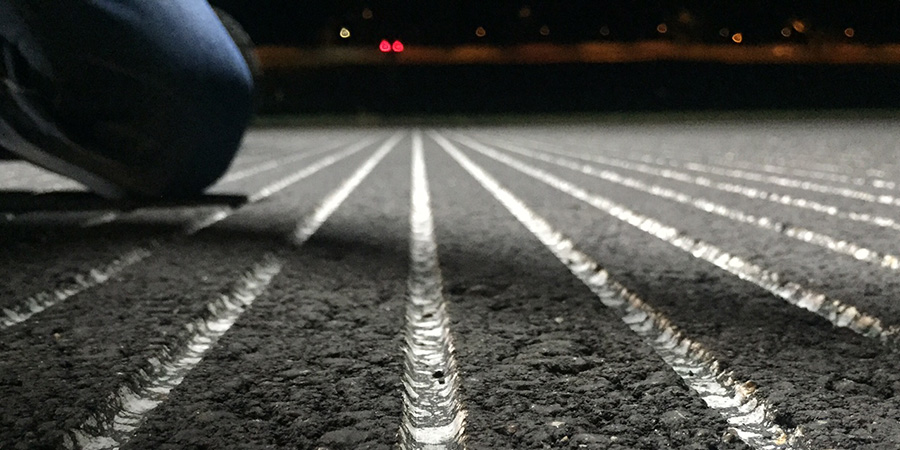


Trapezoidal-shaped grooves on the surface of Changi Airport’s Runway 1
The surface of Changi Airport’s Runway 1 is currently being cut with trapezoidal-shaped grooves never before seen in any Asian airport. Cut by a special machine for runway grooving, the trapezoidal grooves provide better water drainage than traditional square grooves, especially during bad weather. This enhances the safety of aircraft operations by reducing the risk of hydroplaning, which happens when a layer of water builds between the aircraft tyre and the runway surface, which may cause a plane to skid.
At the same time, Runway 1 is being resurfaced with a stronger and more durable asphalt mix which was tested over three years to ensure it achieves a higher temperature resistance, in anticipation of hotter weather from climate change.
Every week, some 6,800 flights take off and land on the two runways at Changi Airport. The impact of the aircraft tyres on contact will cause the pavement surface constructed of asphalt material to age. Regular preventive maintenance of the runways and taxiways is essential. This allows safer and smoother aircraft movements and enables Changi Airport to continue handling heavier aircraft loads and higher traffic volume.
At the same time, new equipment have been procured to boost productivity during maintenance. These special machines are essential to ensure surface evenness and friction on the runways.
Each time an aircraft lands, its tyres will deposit rubber residue which sticks to the pavement surface. To ensure the runways provide good skid resistance, Changi Airport has deployed a new rubber removal machine which uses ultra high-pressure to remove the rubber build-up, at an increased rate of 3,000 sqm/h as compared to the previous 2,300 sqm/h.
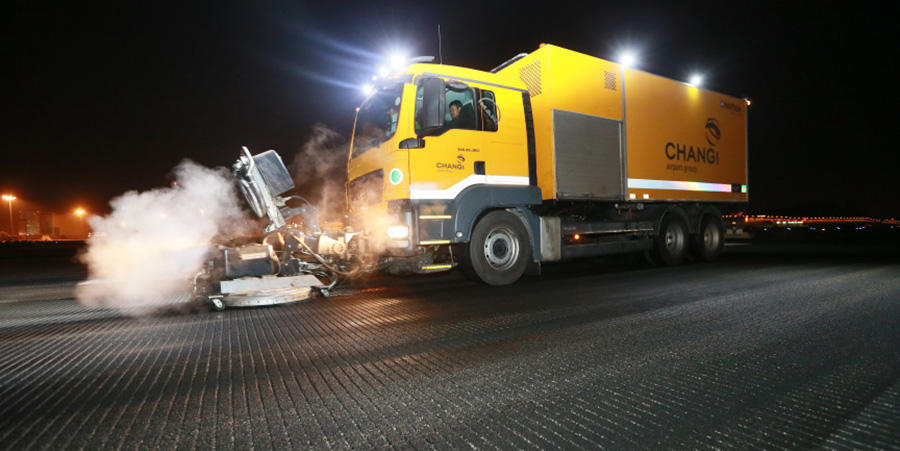


New rubber removal machine.
Changi Airport closes one runway every night for about six hours for regular inspection and maintenance works. Besides runway resurfacing, pavement grooving and the removal of rubber deposits, other works include the servicing of airfield lights, repainting of pavement markings and grass cutting alongside the runway.
"The measures that we have implemented in recent years have proven beneficial and have increased operational efficiency by about 20%, by reducing the time and resources needed to complete the same maintenance works in a night," said Teng Hwee Onn, Senior Vice President of Engineering Management & Systems Planning at CAG. "The reduced maintenance hours have translated to additional time for aircraft operations, which are crucial as air traffic continues to grow."
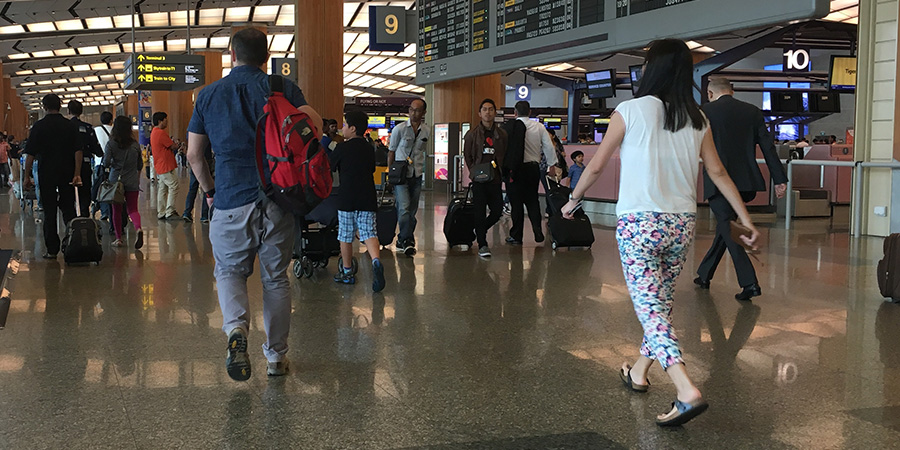
The busiest day of the year for Changi Airport is historically the last Saturday before Christmas Day. Last year, the busiest day was 19 December 2015, where as many as 192,000 passengers passed through Changi Airport. With more travellers expected this year going by air traffic figures so far, Changi Airport looks set to break its own record this year. Changi Journeys finds out how various functions within the airport prepared for operations on that day.
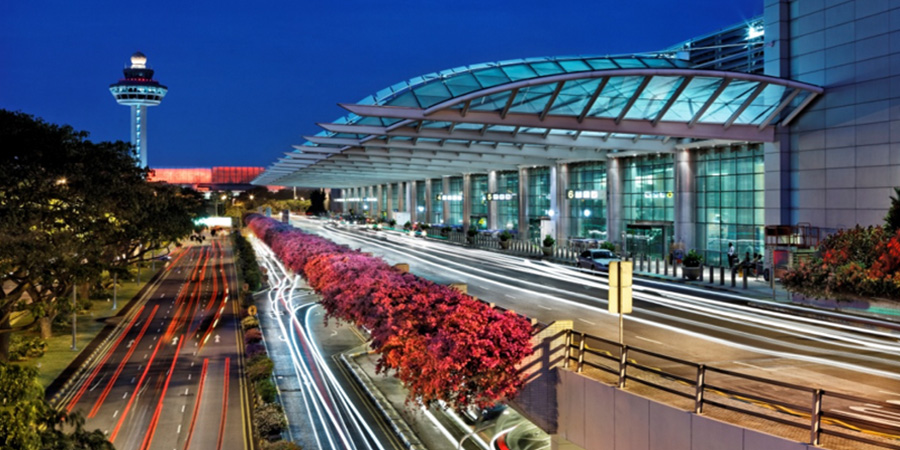
When you think about the design of an airport, chairs may not be something that come to mind. However, at Changi Airport, every passenger touch point is carefully thought through and designed for passengers’ comfort, down to the chairs in the terminals.
What may seem like a random spread of chairs at first glance is actually a well-curated selection of seats. Changi Journeys speaks to Kenneth Ho, Senior Manager of Changi Airport Group’s Facilities Management team to find out more.
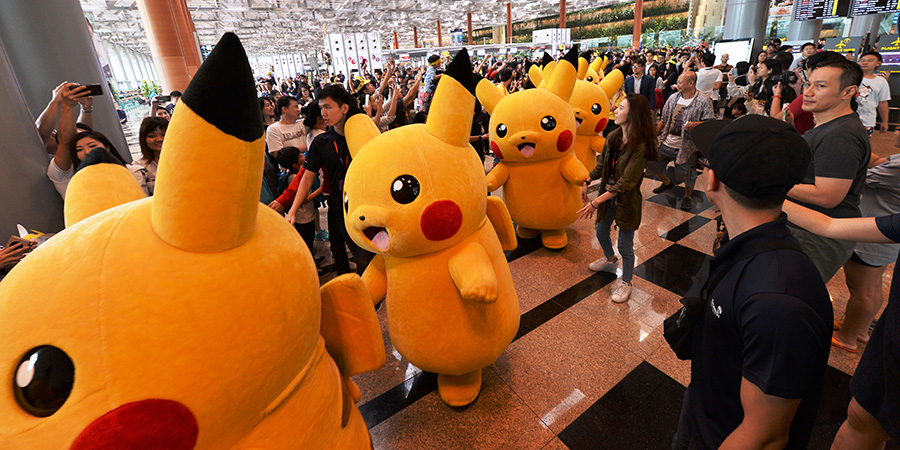
Pikachu and friends warmly welcomed passengers and visitors to Changi Airport as part of the year-end celebrations in the airport. Taking centre stage at Terminal 3 is the huge seven-metre tall Pikachu, right next to a gigantic gingerbread house. As part of the activities, 10 life-sized Pikachu danced together to entertain those present for the launch on 18 November 2016.